Africa, day 13: Stone Town, Zanzibar.
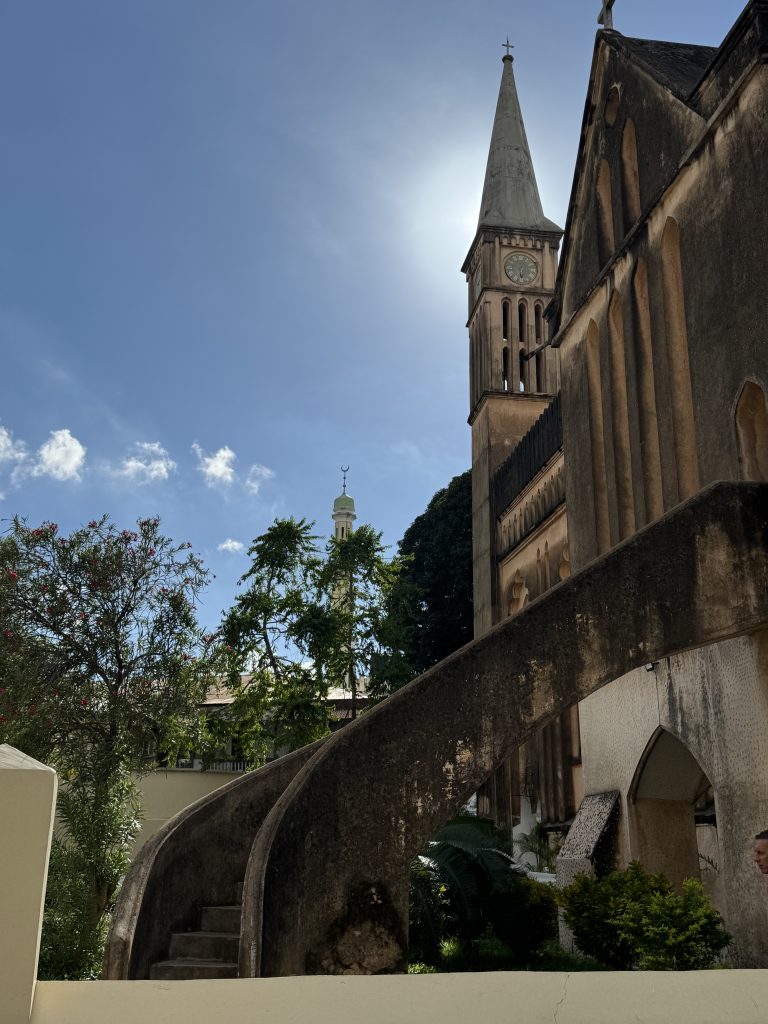
This Anglican church was built in 1874, on the site that was once the slave market. As soon as we got to Stone Town, we were taken here. We heard some terrible things about Zanzibar’s history, which made me a bit uncomfortable about the absolute luxury of the resort we’re staying at.
this photo you can see the Anglican Church, with the spires of a Mosque next door. Awaysu, our guide, said it demonstrates the tolerance in Zanzibar.
He also said that the name Zanzibar means “ Land of the Black man.”
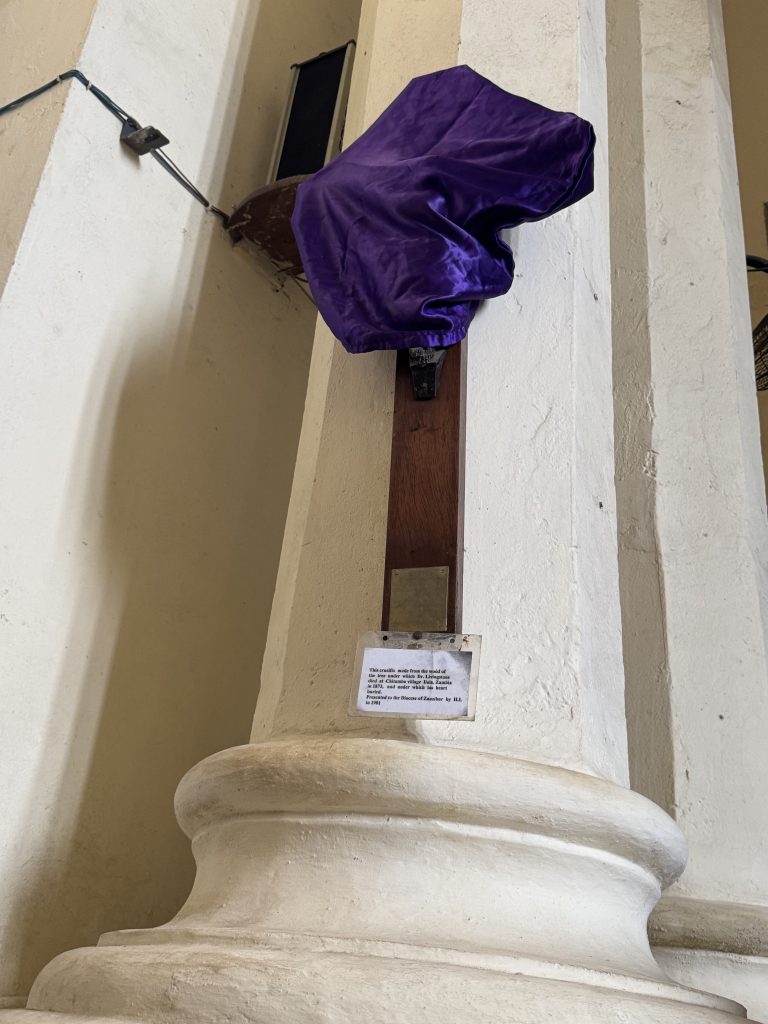
This cross is covered up for Easter, but it’s a memorial to Stanley Livingstone, the famous explorer. It’s made from the wood of the tree under which he died in 1873.
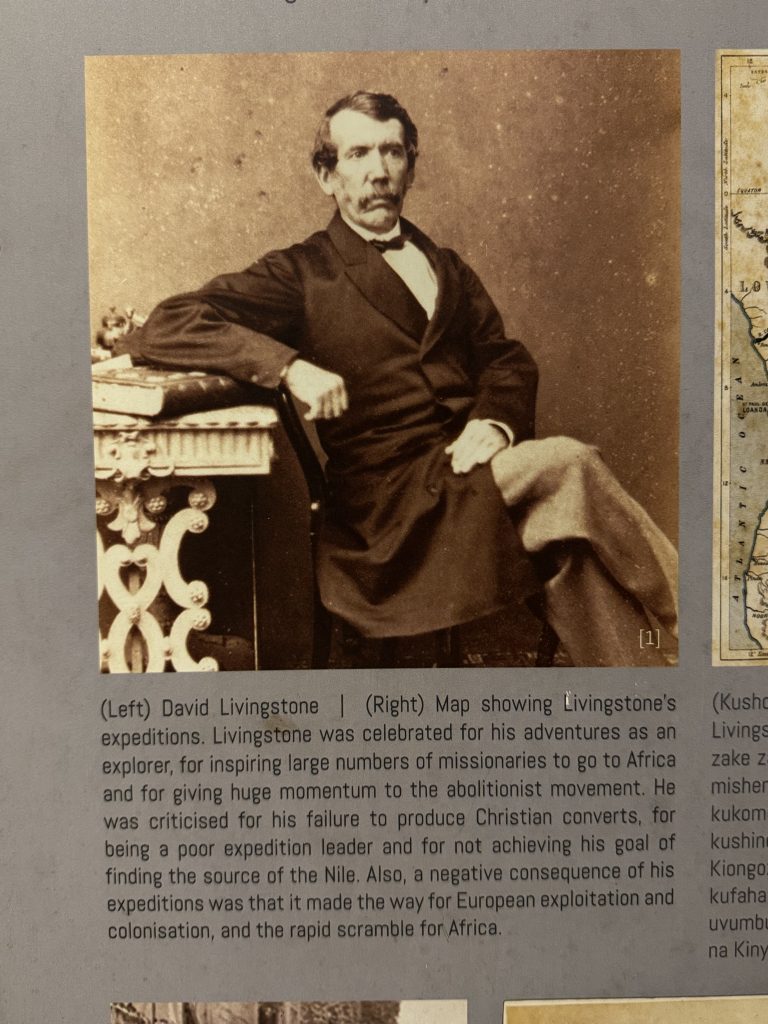
Here’s what he looked like. He was big on banning the slave trade in Africa.
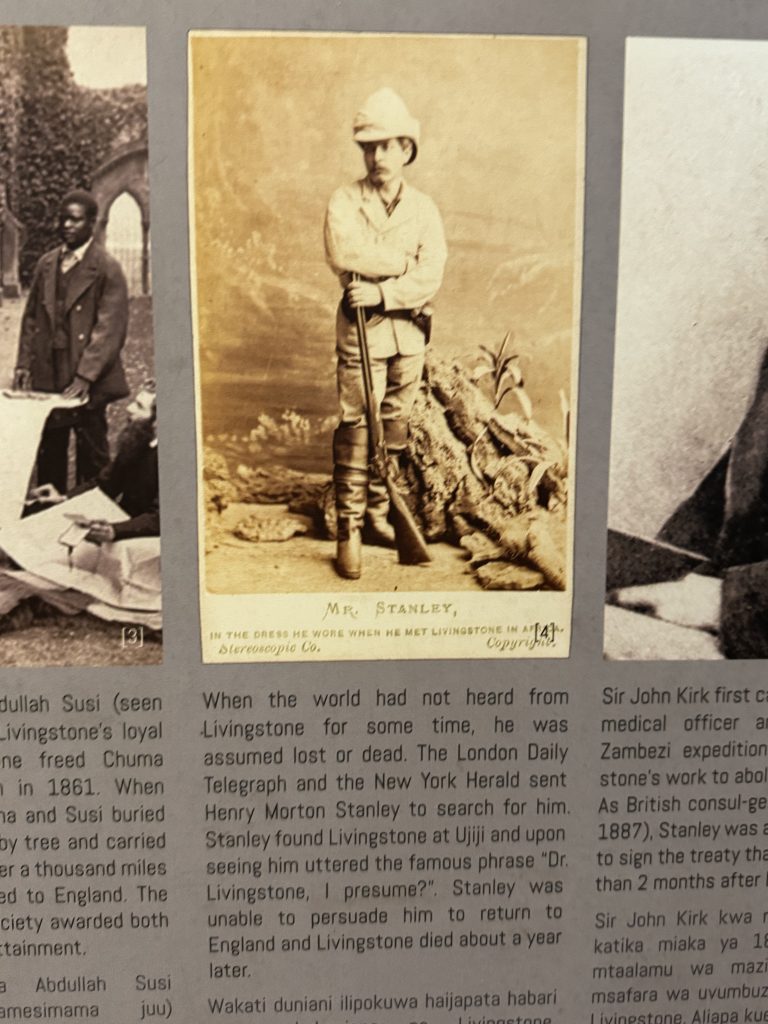
And here’s Stanley.
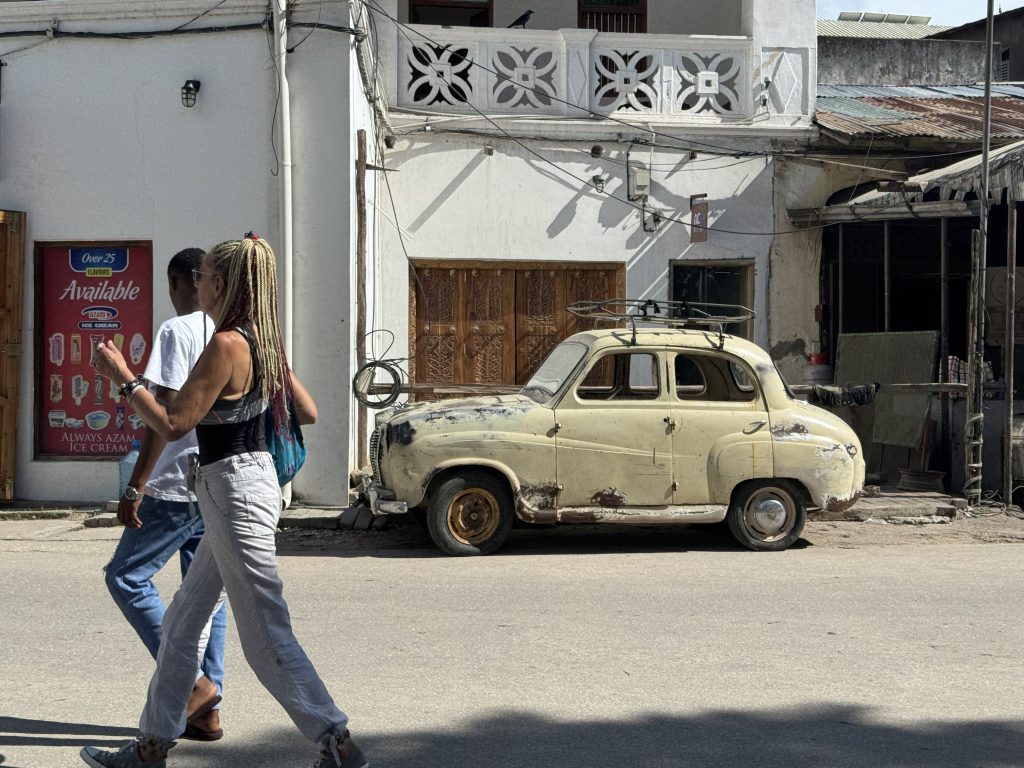
The original inhabitants had no religion. Things have certainly changed! Zanzibar is 90% Muslim, with most being Sunni ( the more relaxed ones) with 10% being Christian.
It’s funny. We were driving around and I was feeling a little unsettled. I couldn’t put my finger on what it was. It wasn’t the poverty – I was used to that. Then it hit me. It was the fact that every single one of the women and girls, even tiny toddlers, were veiled. This is the first time in all my travels that I’ve been to a Muslim country.
Zanzibar was ruled by Oman for centuries, which is when the Muslim religion took hold. The British took over from around the early 1800’s, which is when Christianity got a slight toe hold.
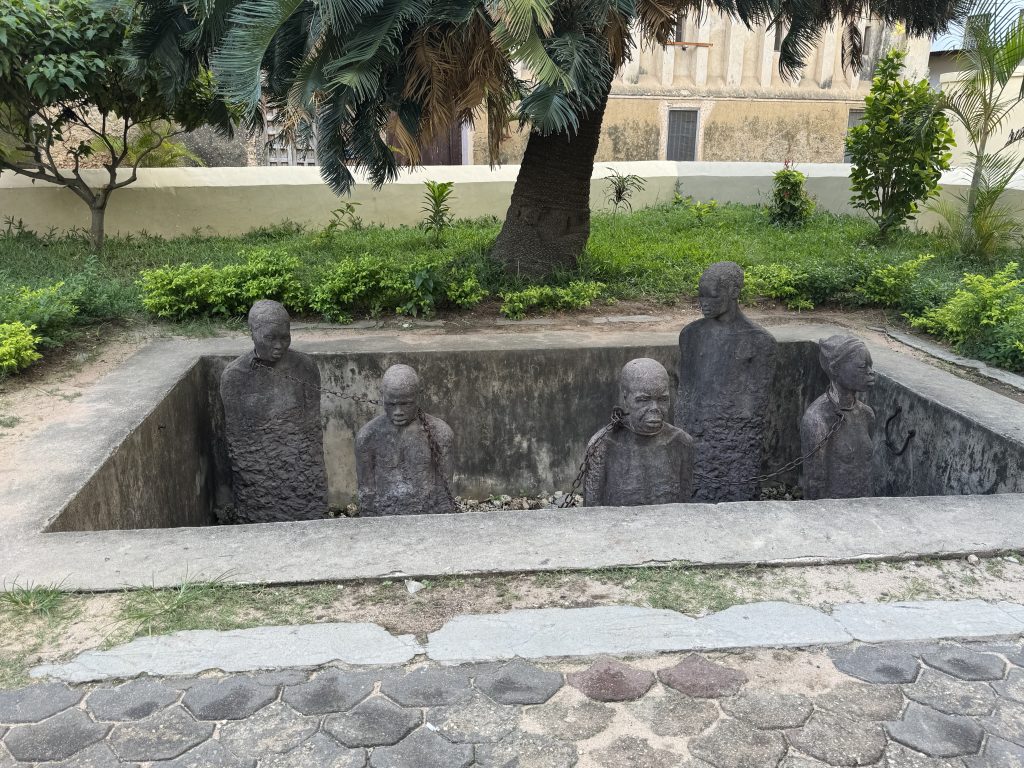
Here’s a sculpture behind the church that shows how the slaves were kept when they were brought for sale. They were treated horribly, often sold to slave traders by their own chiefs.
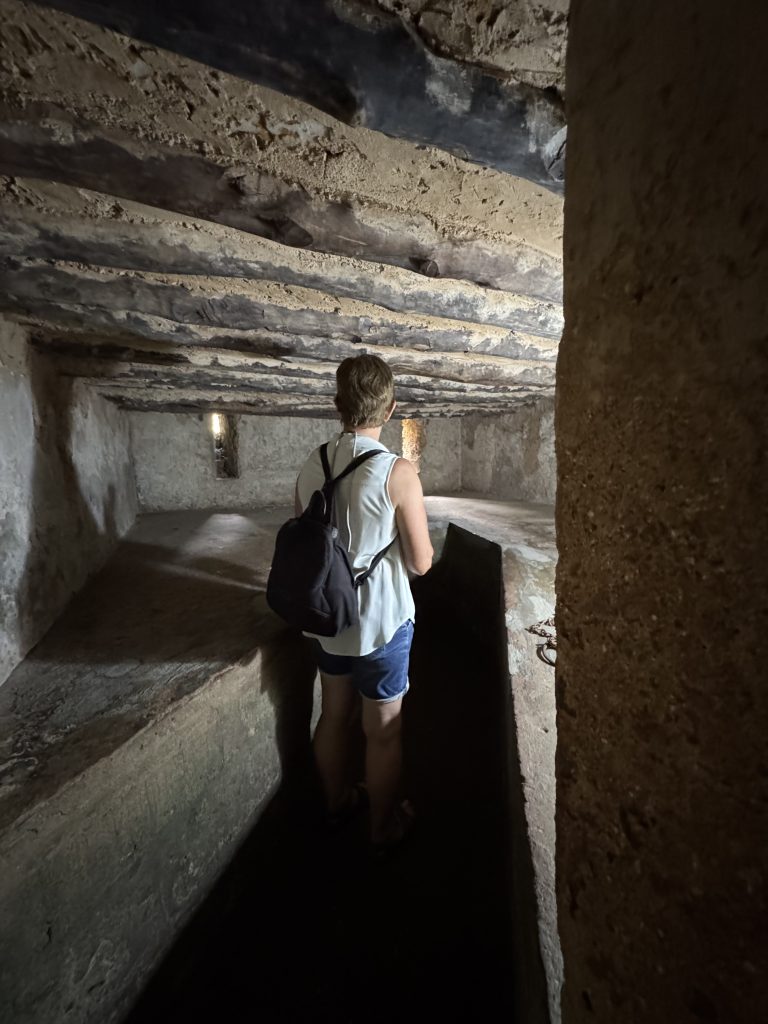
As many as 75 people were kept in underground cells like this, waiting for the sale days.
While there was a lot of money to be made from the slave trade, most individual slaves weren’t worth all that much, so if they got sick or died on the way over, the traders would just dump the bodies on the beach, to avoid paying tax on them. There are diary entries from Europeans describing the piles of rotting, bloated corpses on the beach, waiting for the tide to come and carry them out to sea.
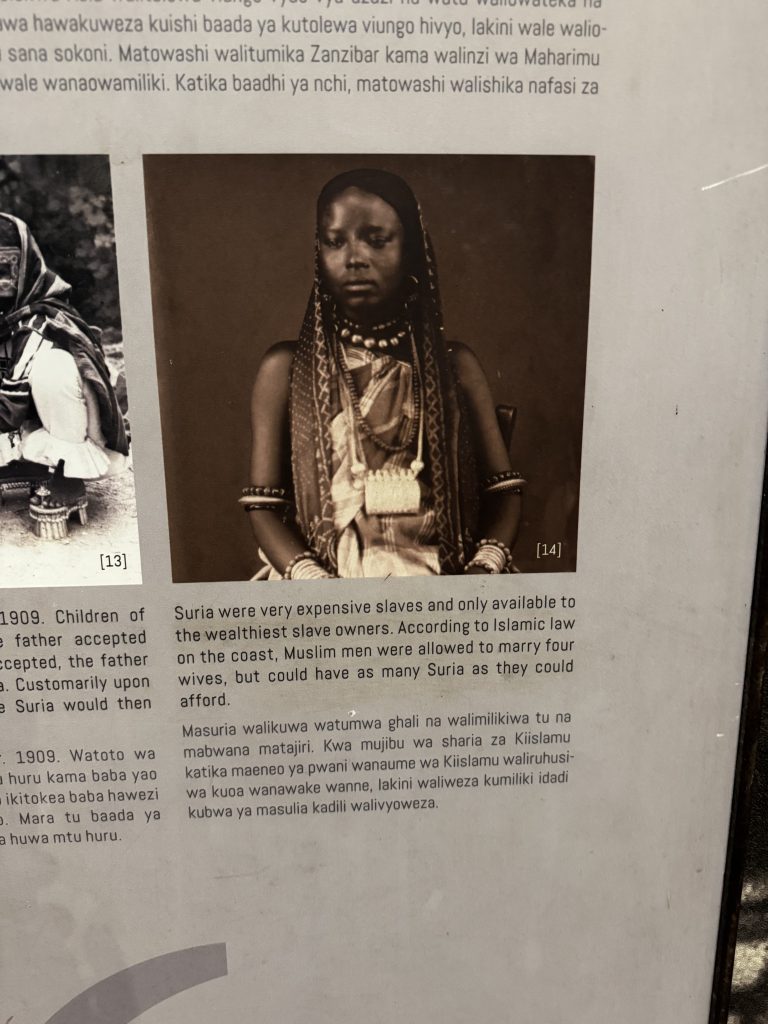
These boards are from the slavery museum next to the church.
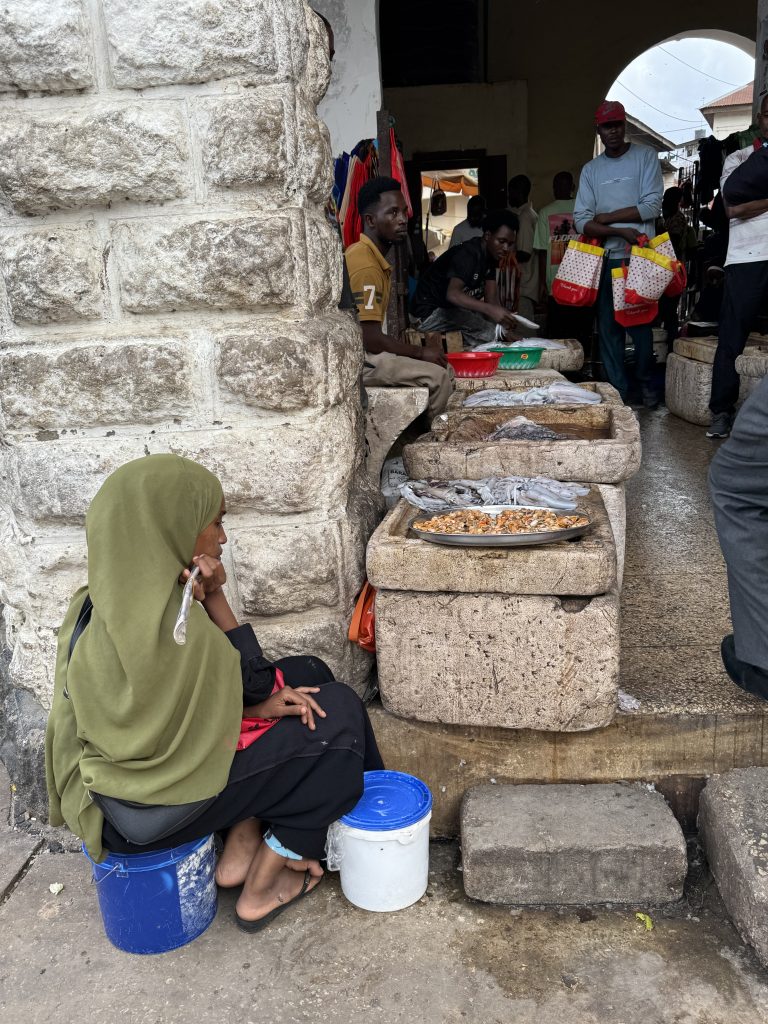
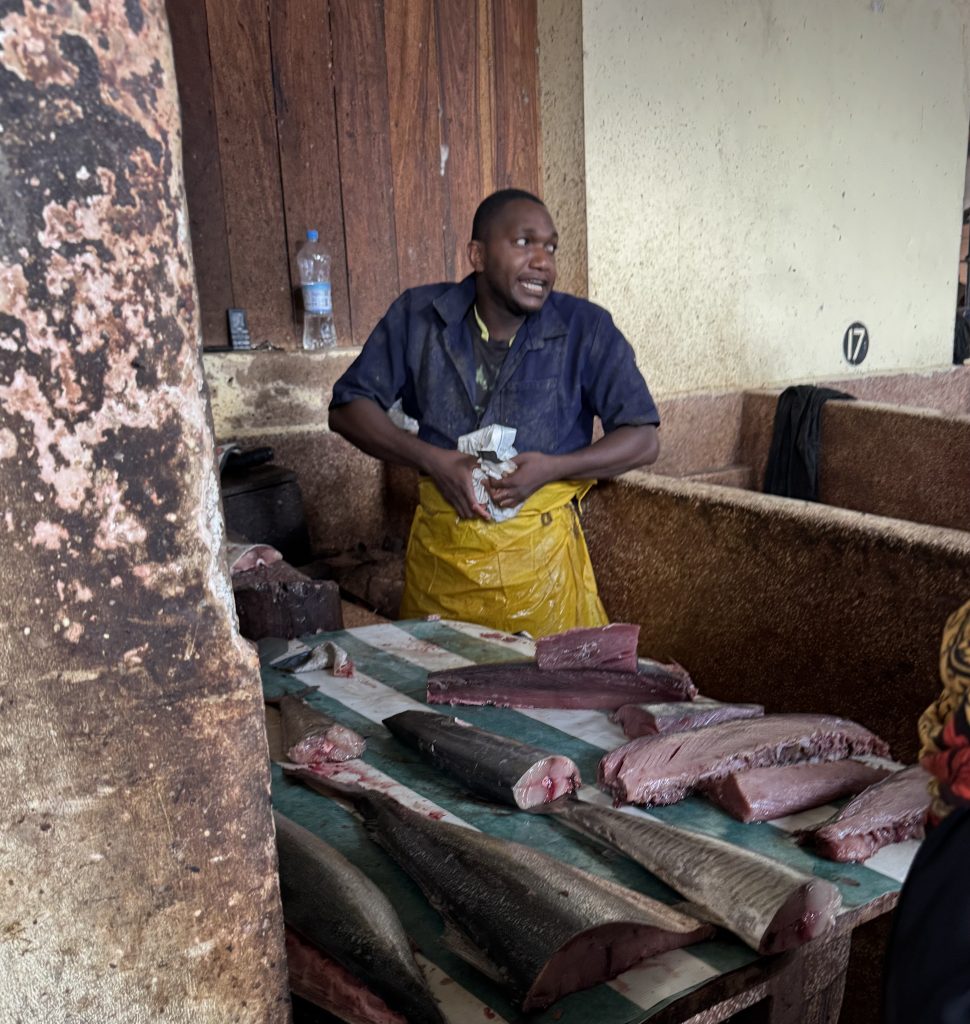
Our next stop was the fish market. I’m not sure if you can see the clouds of flies on and over the fish. We had to be careful where we stepped, as they hose down the floors and there were puddles of fishy water.
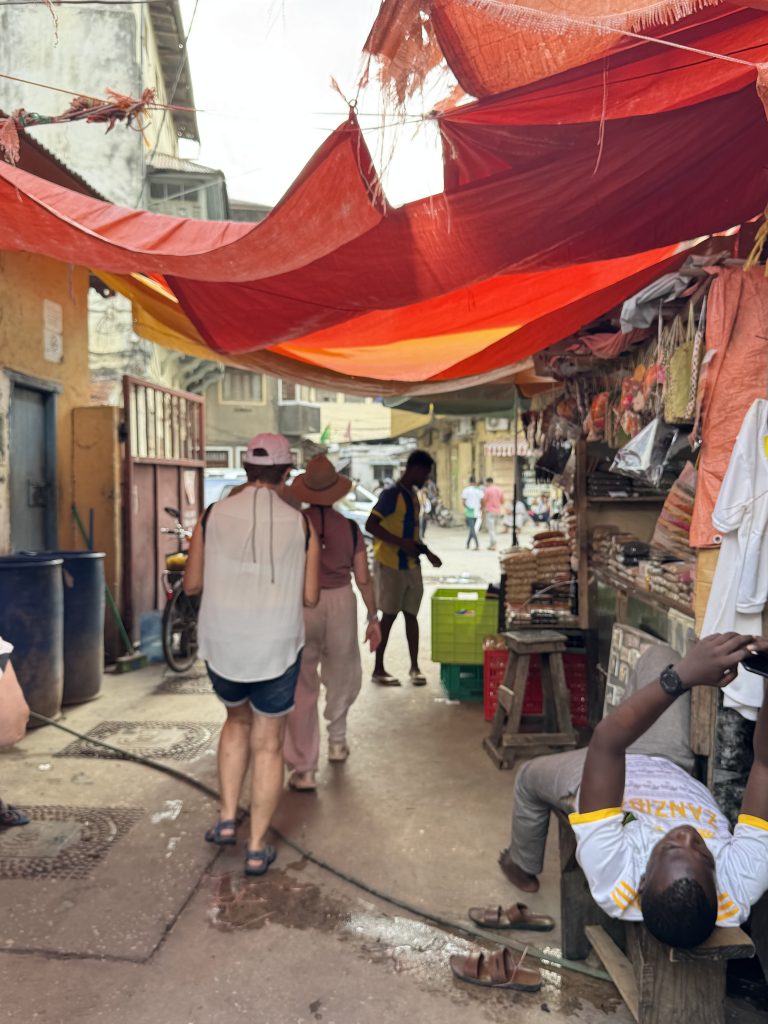
This is the first place I’ve ever felt where I should tuck my bag up under my armpit as I walked through. There was a man in a green t shirt following us- Maria spotted him – and I thought I’d feel more comfortable with my bag tucked closer to me. Somewhere along the way he peeled off and disappeared, so my bag went down by my side again.
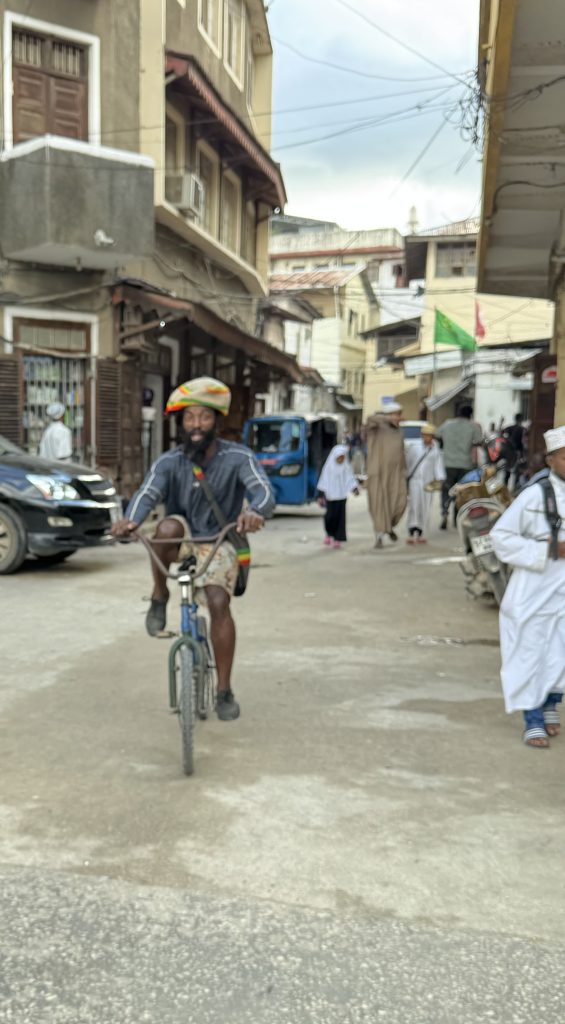
Then we were off for a walk around Stone Town.
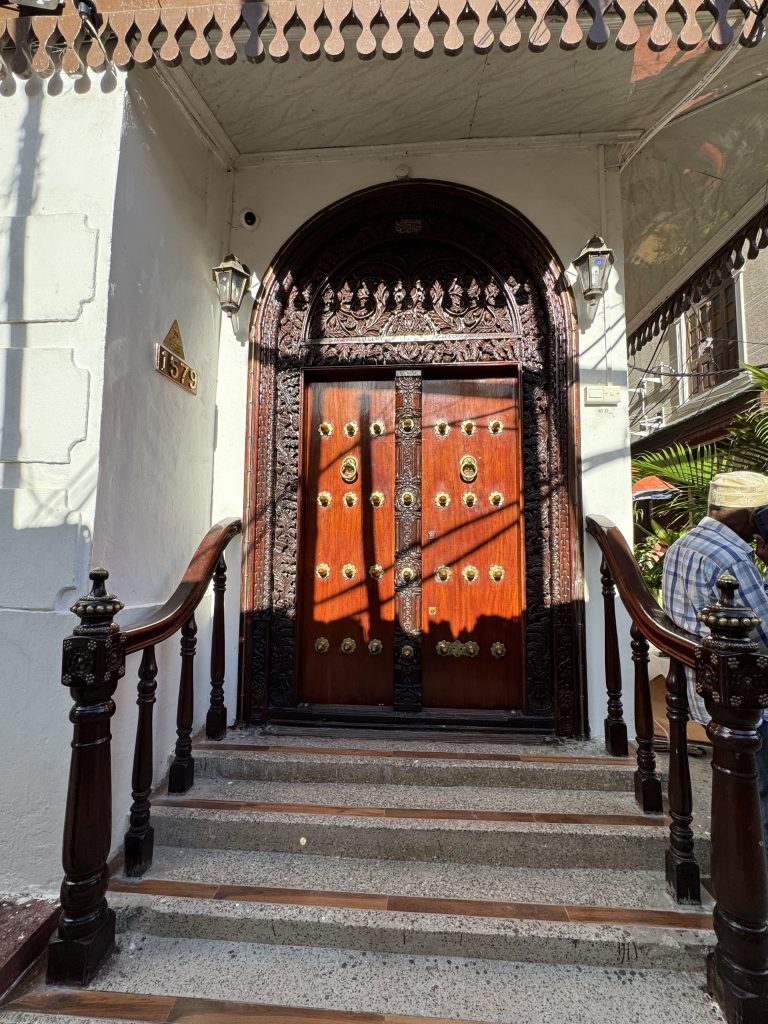
Stone Town is known for its doors. The rounded ones are of Arab influence…
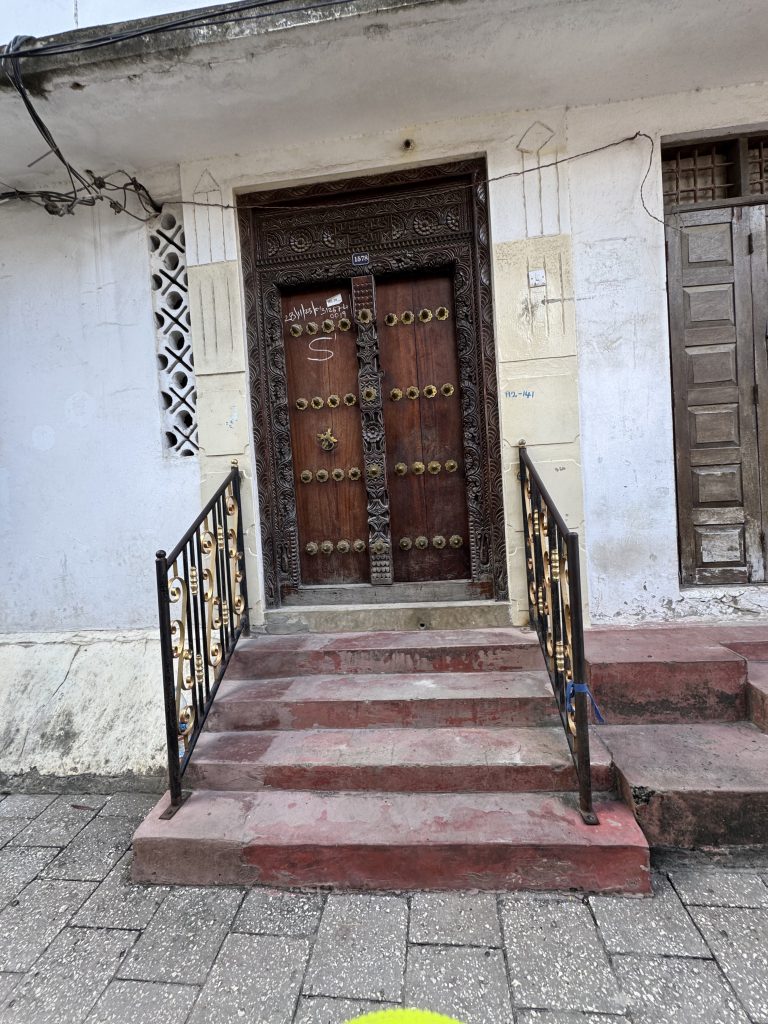
… while the square ones are Indian.
Do you see the spikes? They are there from back in the day, when elephants were used in the streets of Stone Town. They would sometimes lean against the doors and sometimes the doors would cave in. They put spikes to dissuade the elephants. Nowadays, of course, it’s tradition and for fun.
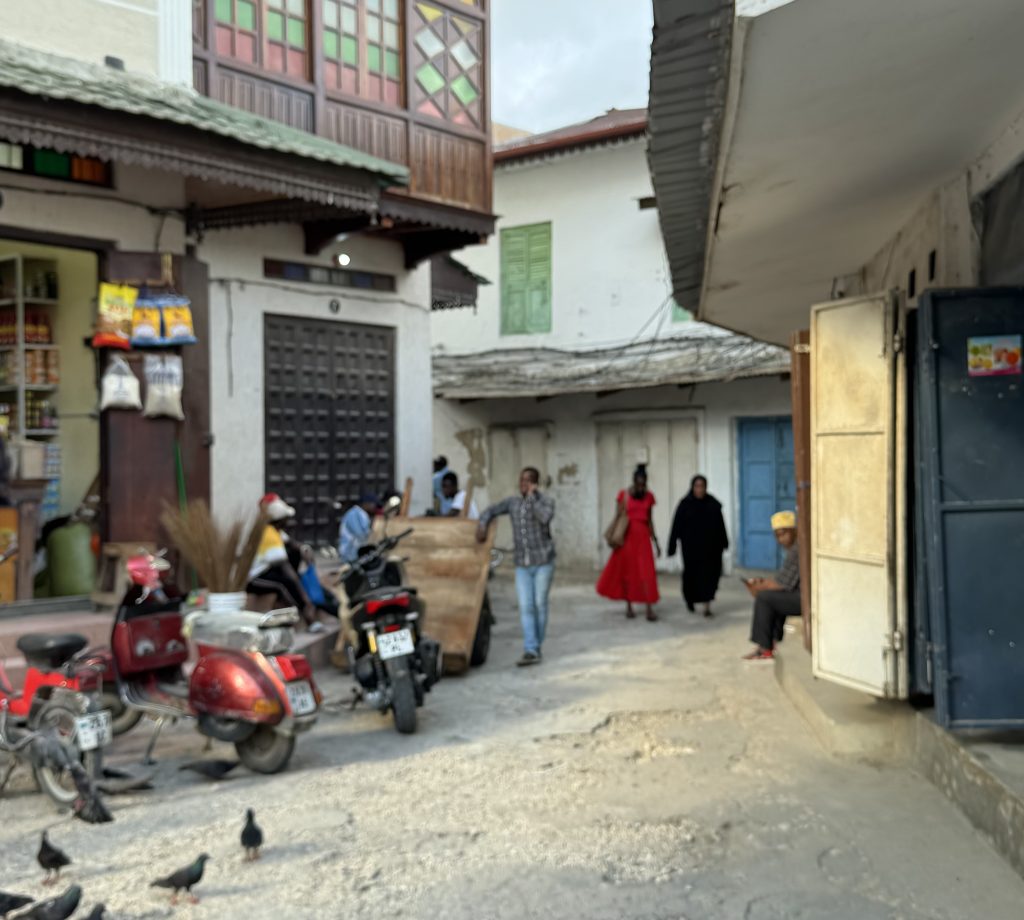
There’s a love of colour here in Africa.
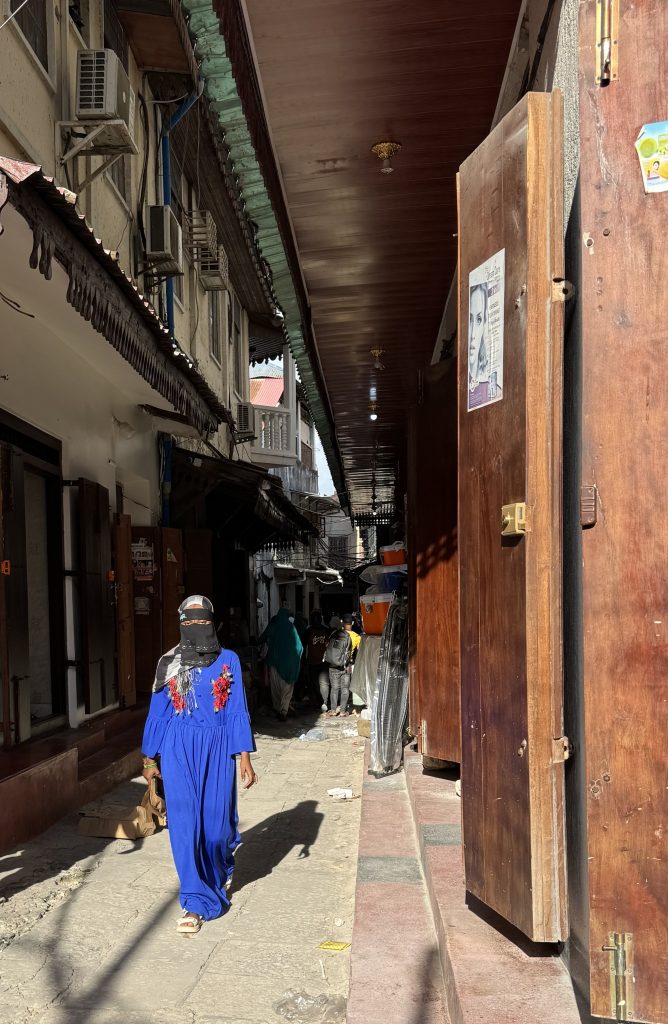
It’s very humid here. I can’t help feeling that the women here would be terribly hot every time they stepped out of their houses and had to put the extra layers on.
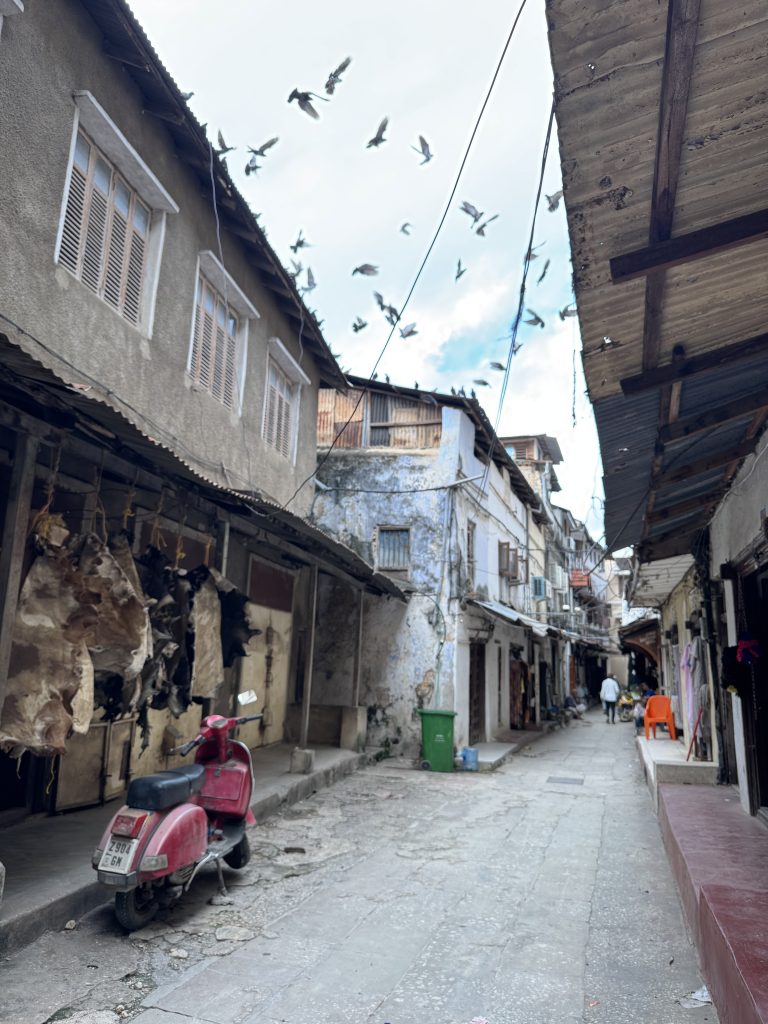
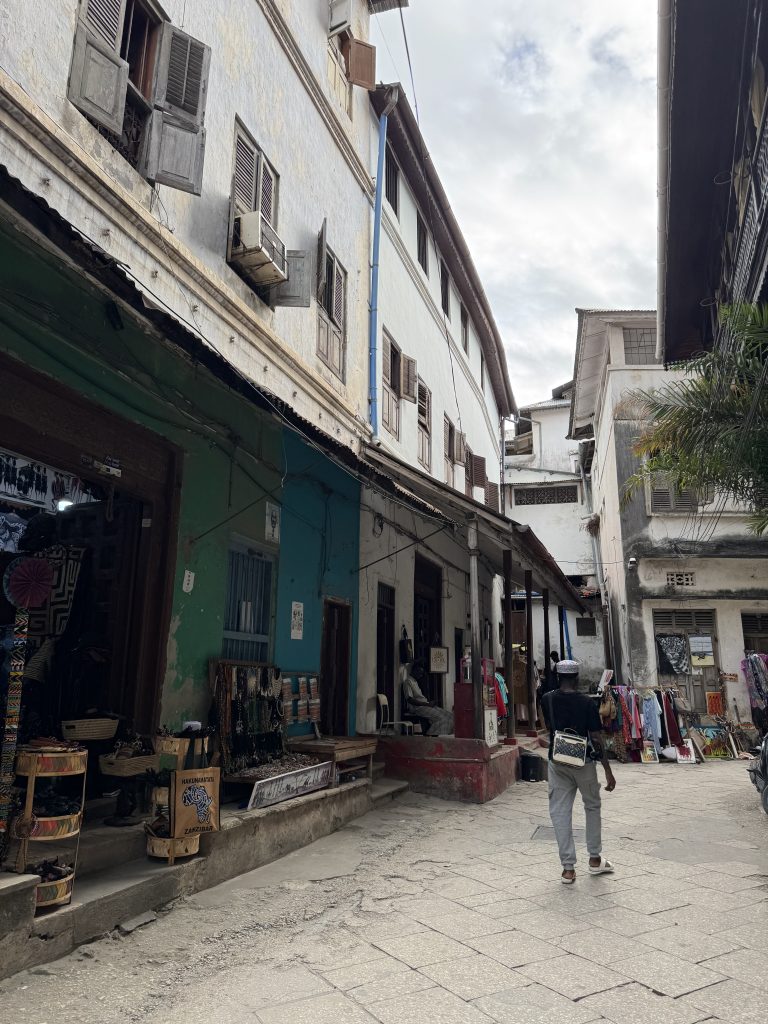
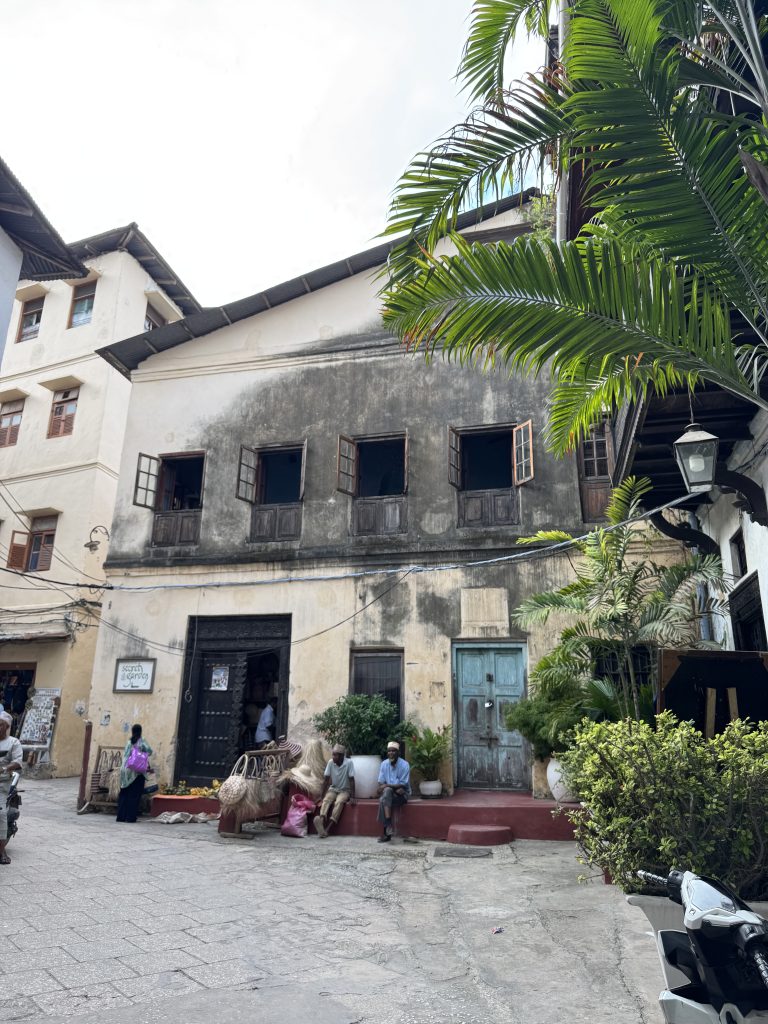
We wandered around, following Awaysu like ducklings.
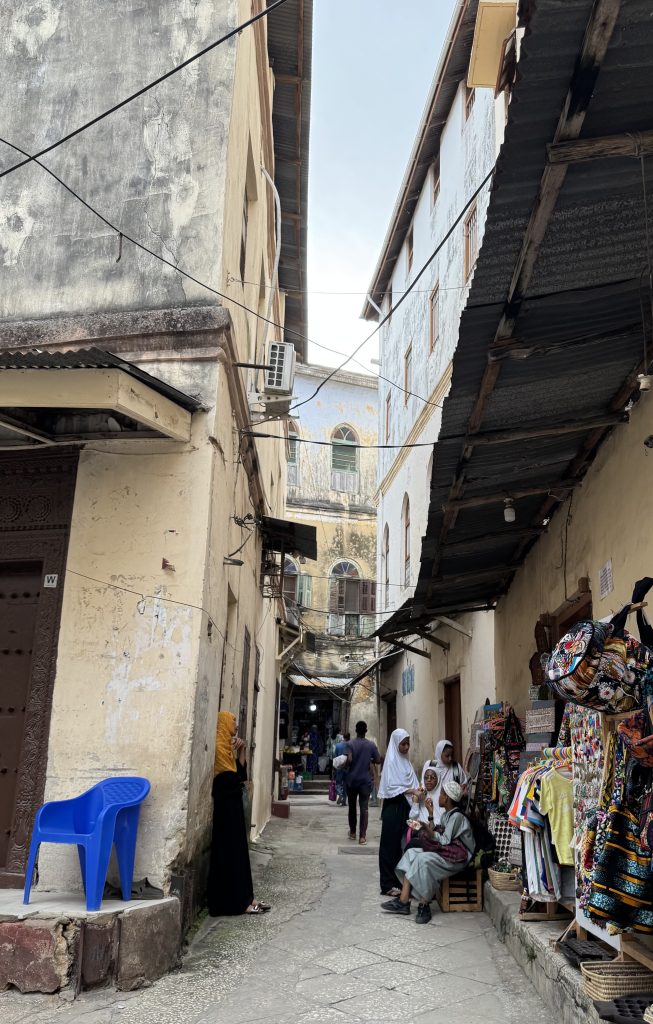
Some alleyways were nearly empty, while in others we had to step aside for motorbikes or men handling wheelbarrows loaded with bags of cement.
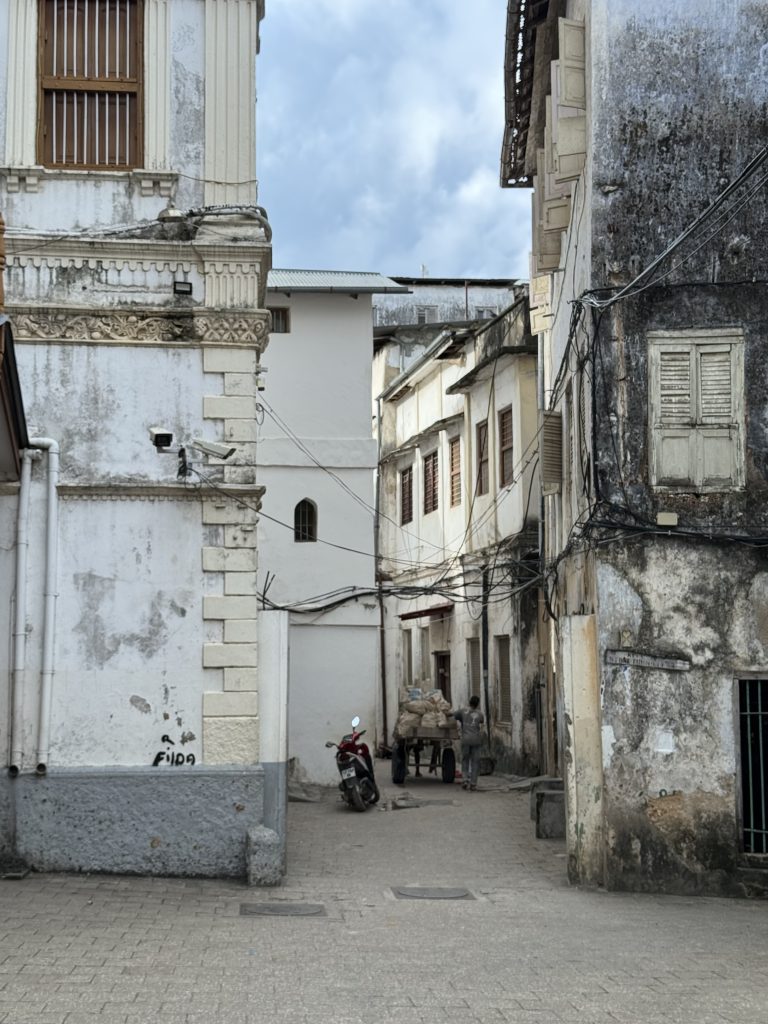
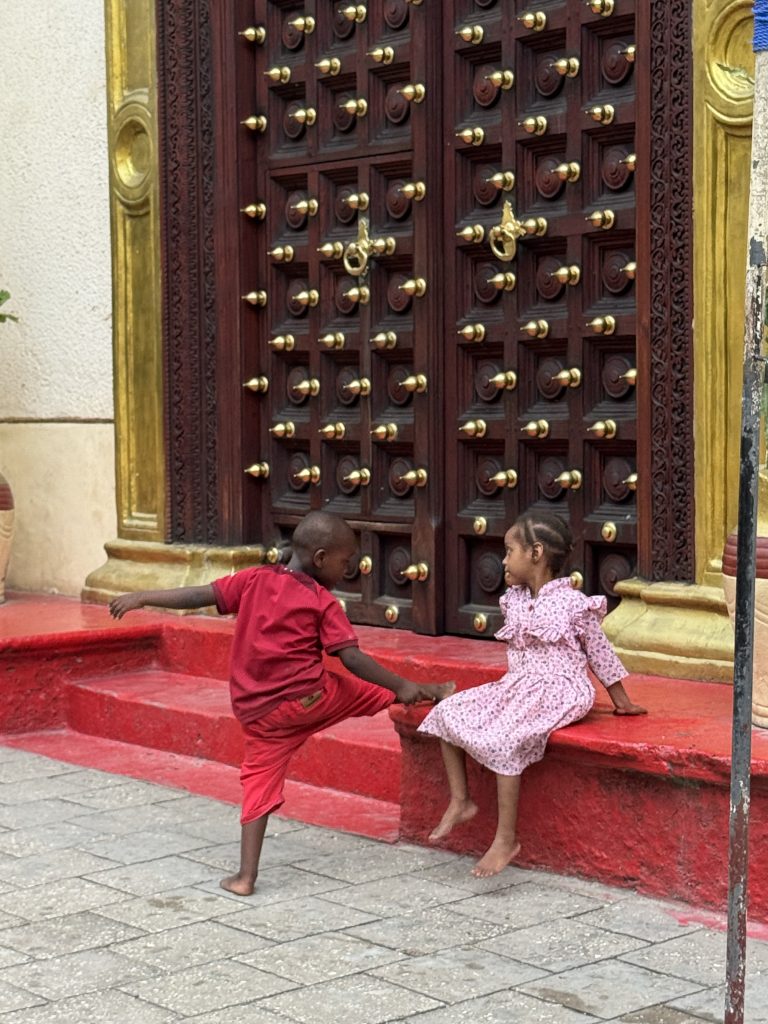
Maybe this little girl is from a Christian family. She was one of the few girls I saw without a scarf.
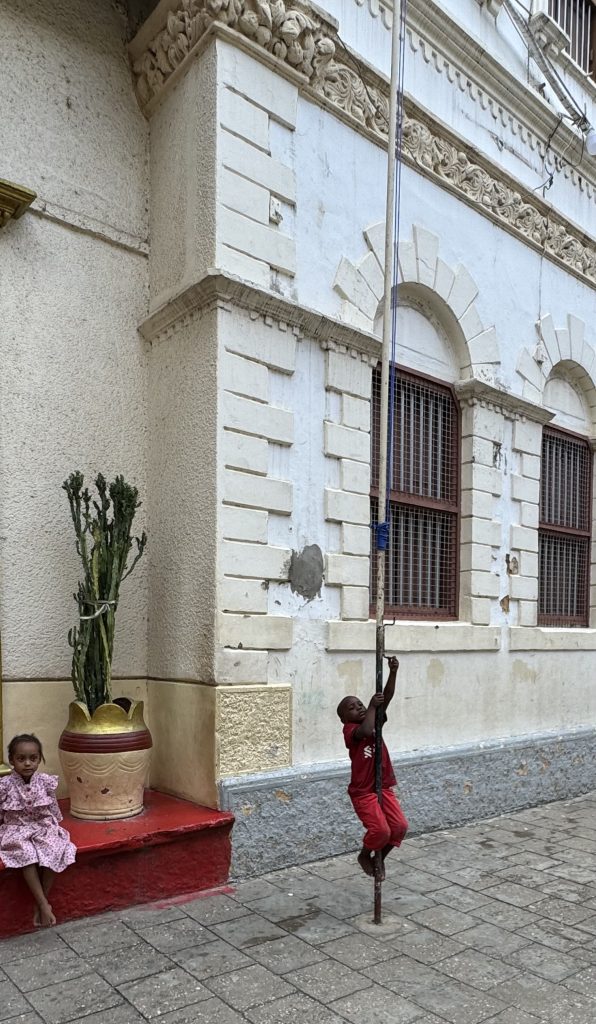
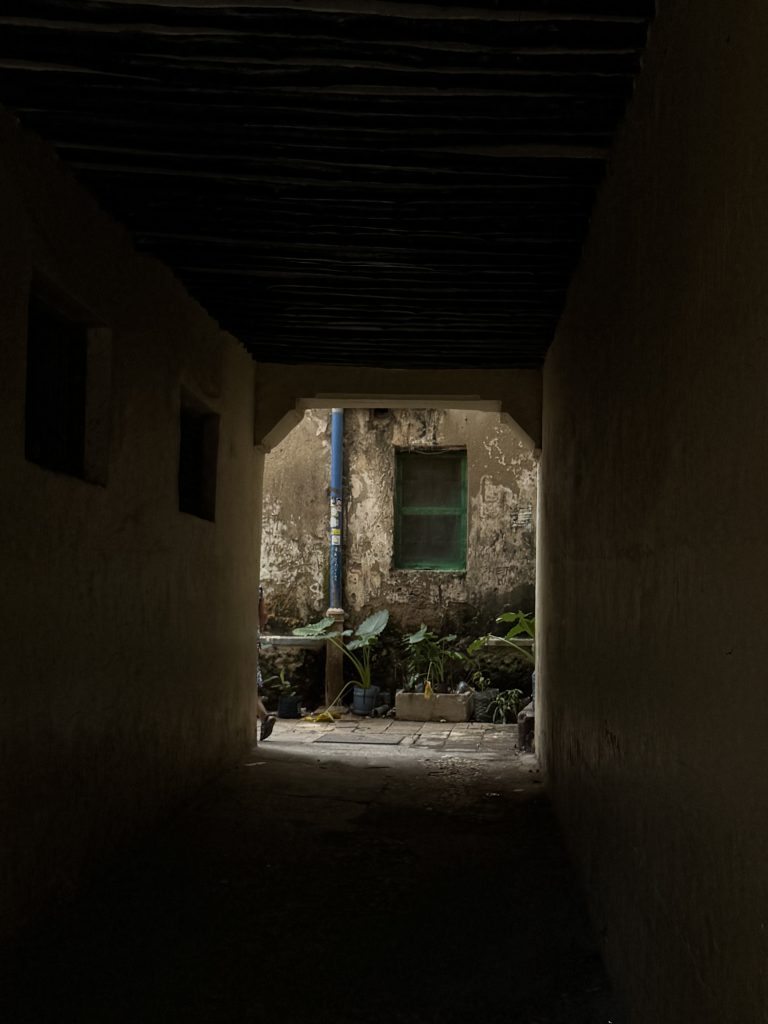
Look at me being artistic! This is an alley going through a tunnel:
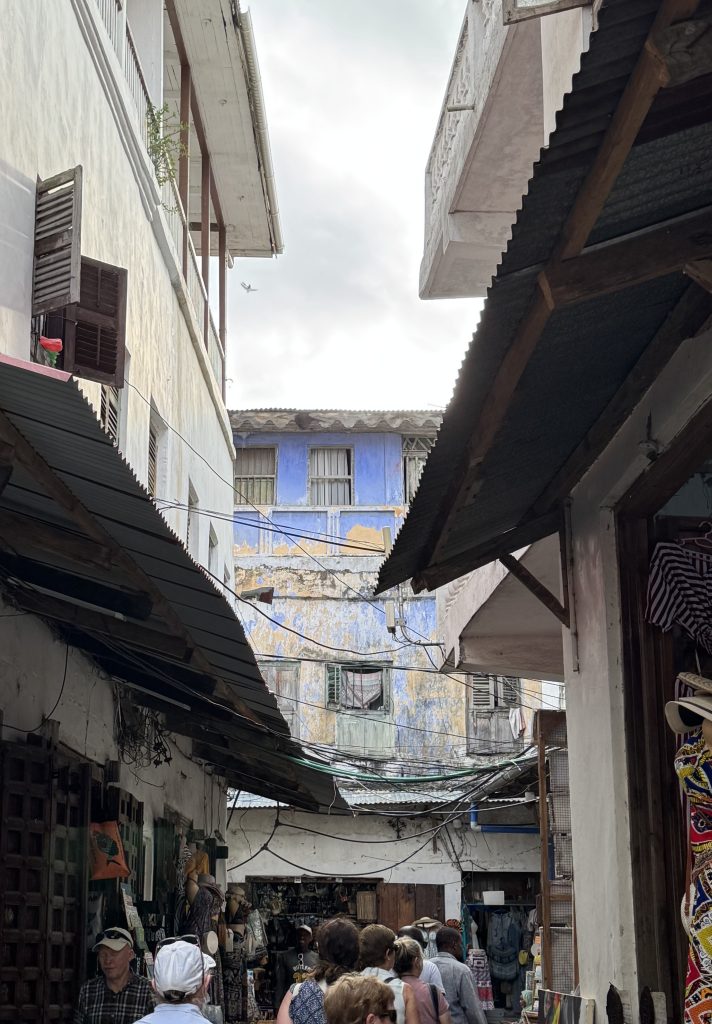
Stone Town is old, full of buildings that are crying out for renovation. It has a UNESCO heritage listing, which the government in Tanzania is doing their best to retain for tourism.
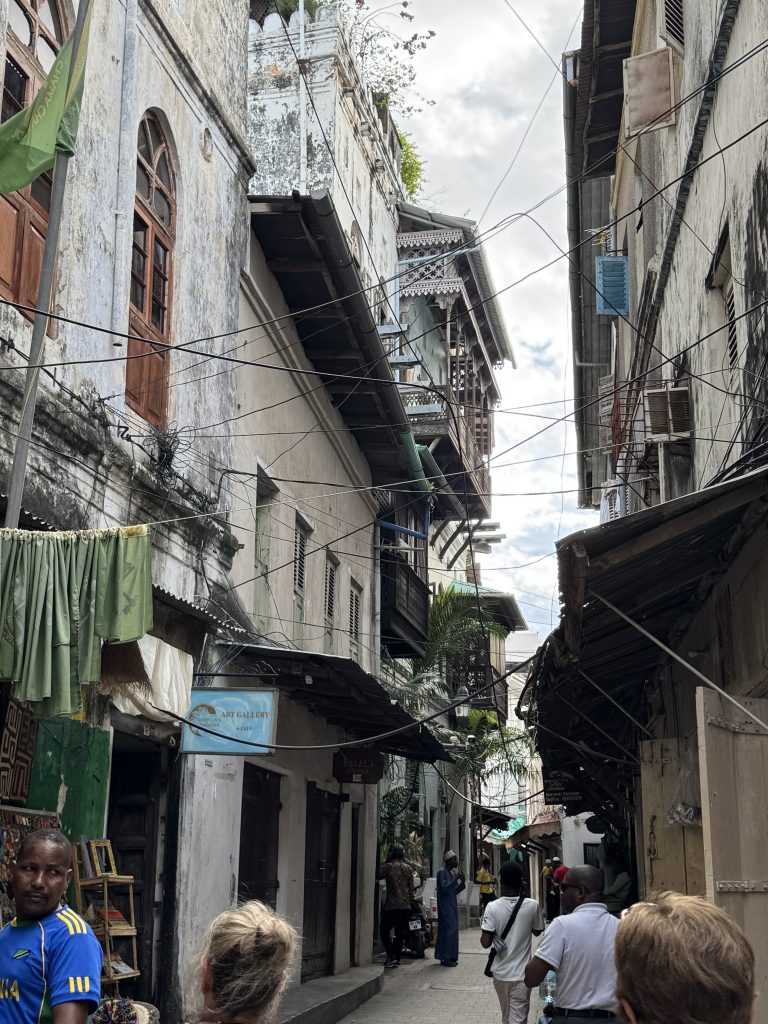
The buildings are designed to catch every breeze.
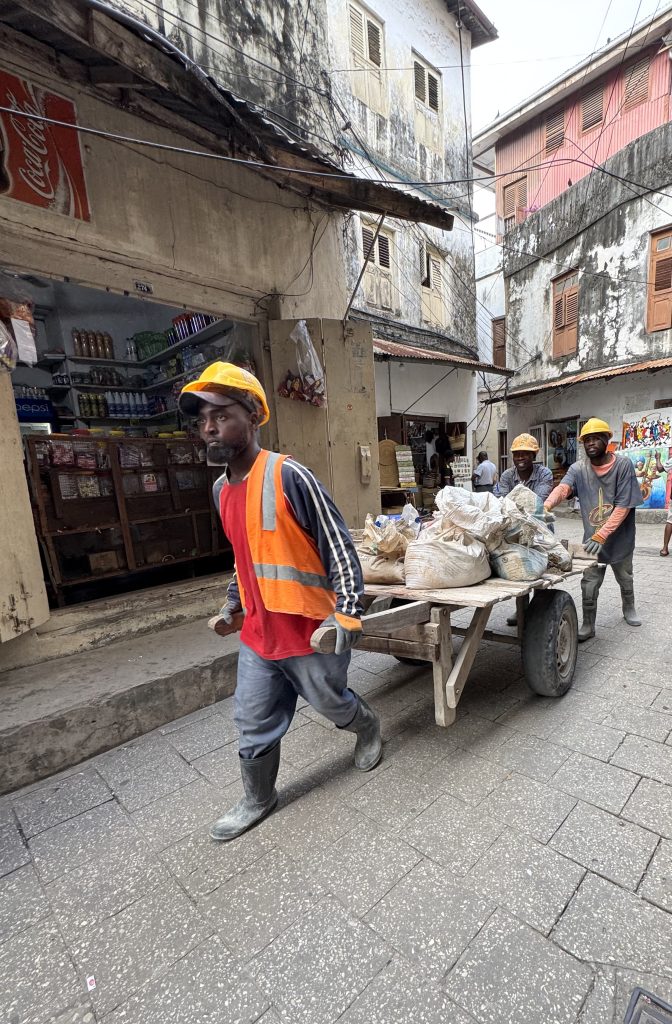
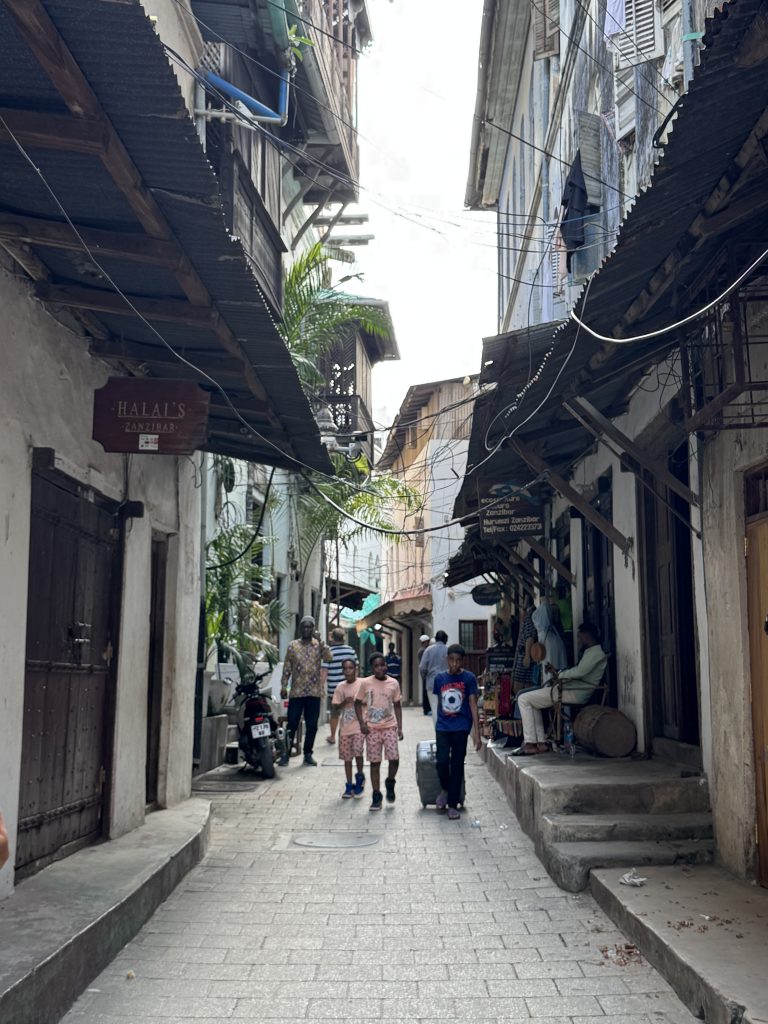
The shopkeepers were inviting us in:
”Easter special!”
”Small shop, small price!”
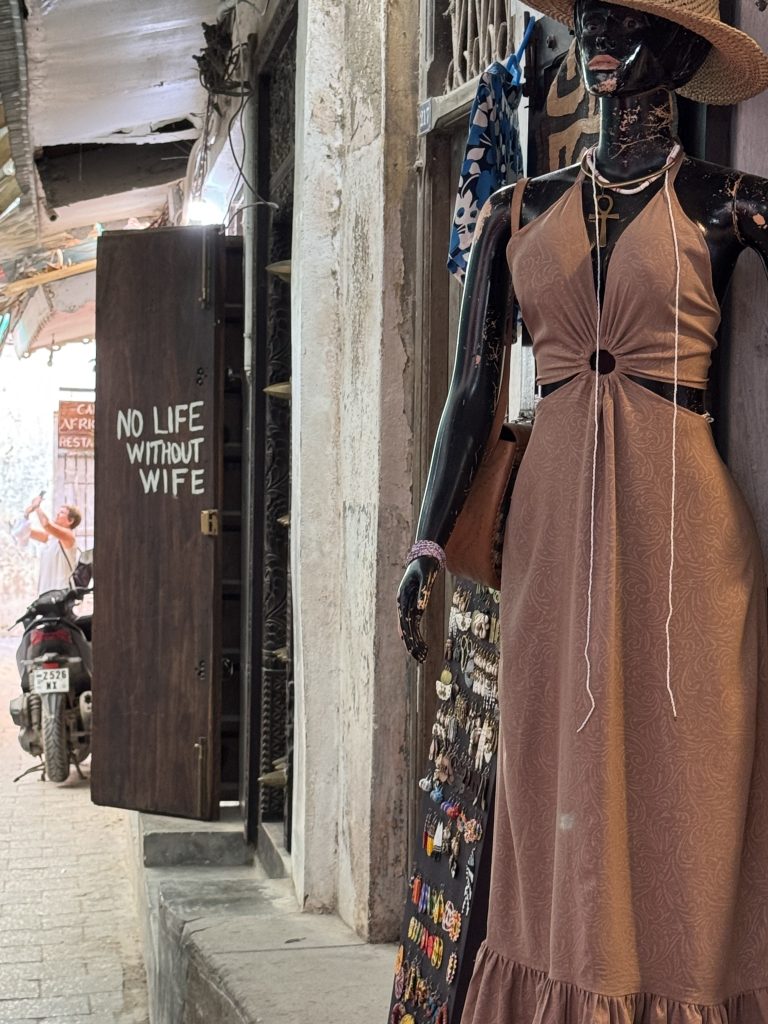
”This is very true for me!” Said Awaysu, chuckling. On the way back to the resort, he was telling us how parents arrange the marriages between their children. You are not allowed to choose for yourself. If the parents don’t approve, or can’t agree on a dowry, then the marriage doesn’t take place.
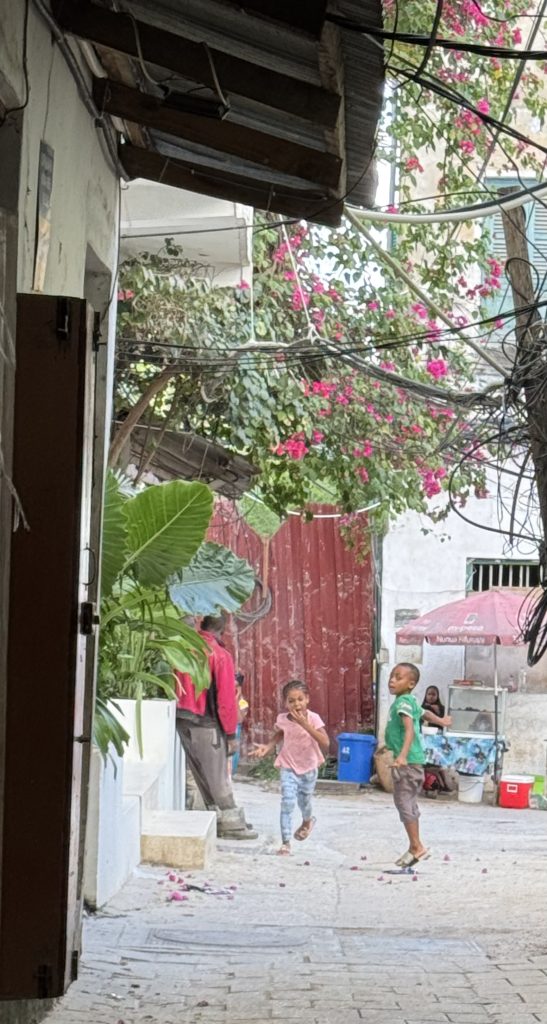
Kids.
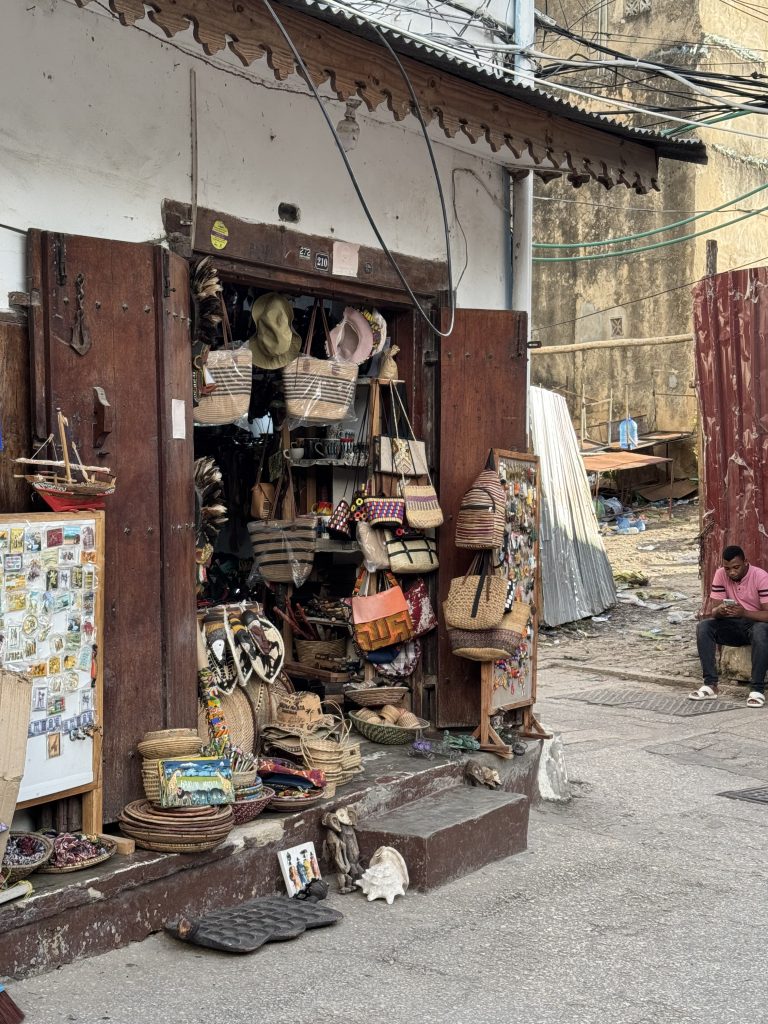
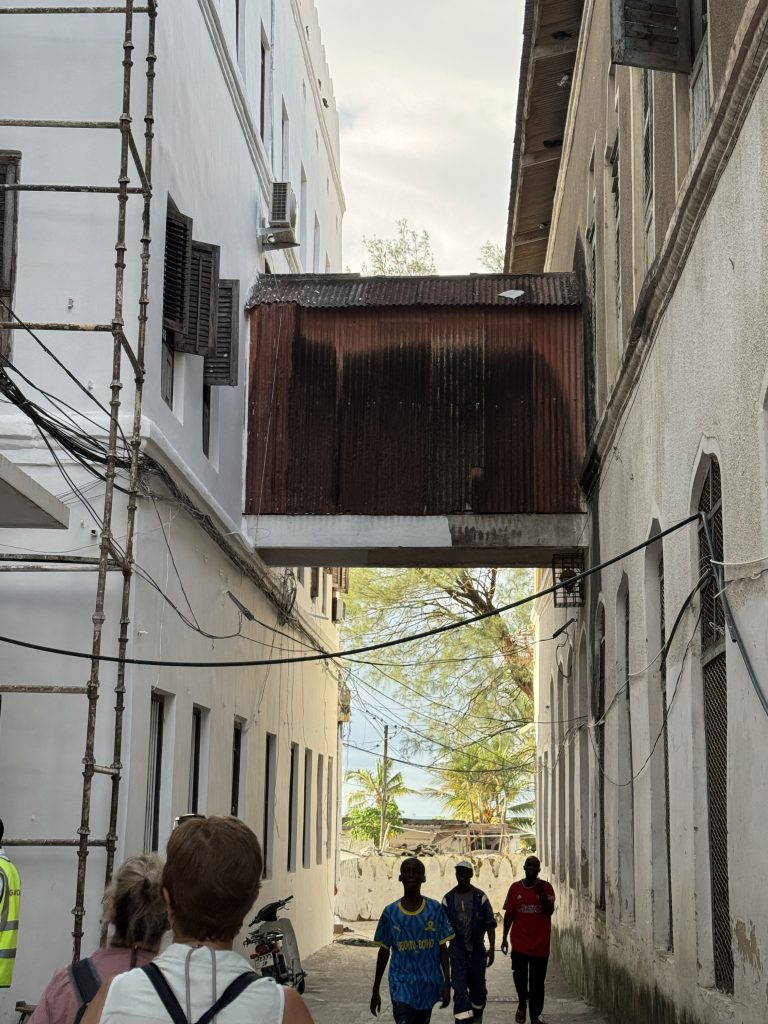
I took this photo because it reminded me of the Bridge of Sighs in Venice.
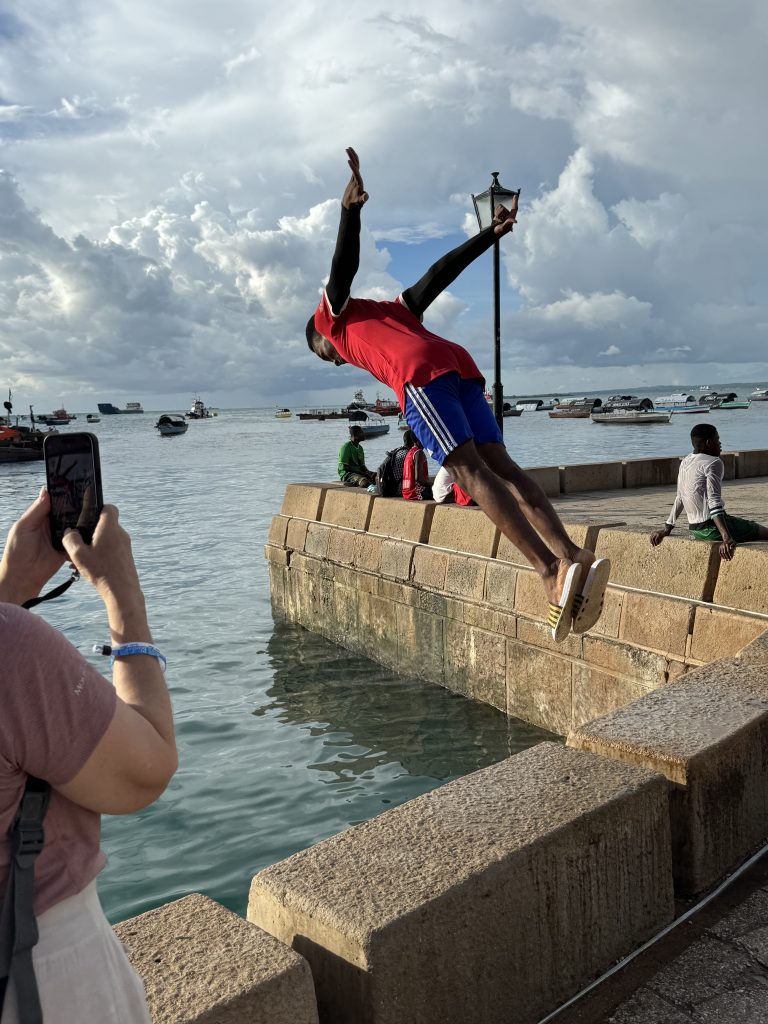
We emerged from Stone Town to walk along the harbour.
These boys earn money by holding up signs with people’s names, or Welcome to Zanzibar!’ as they jump into the water.
it was fun.
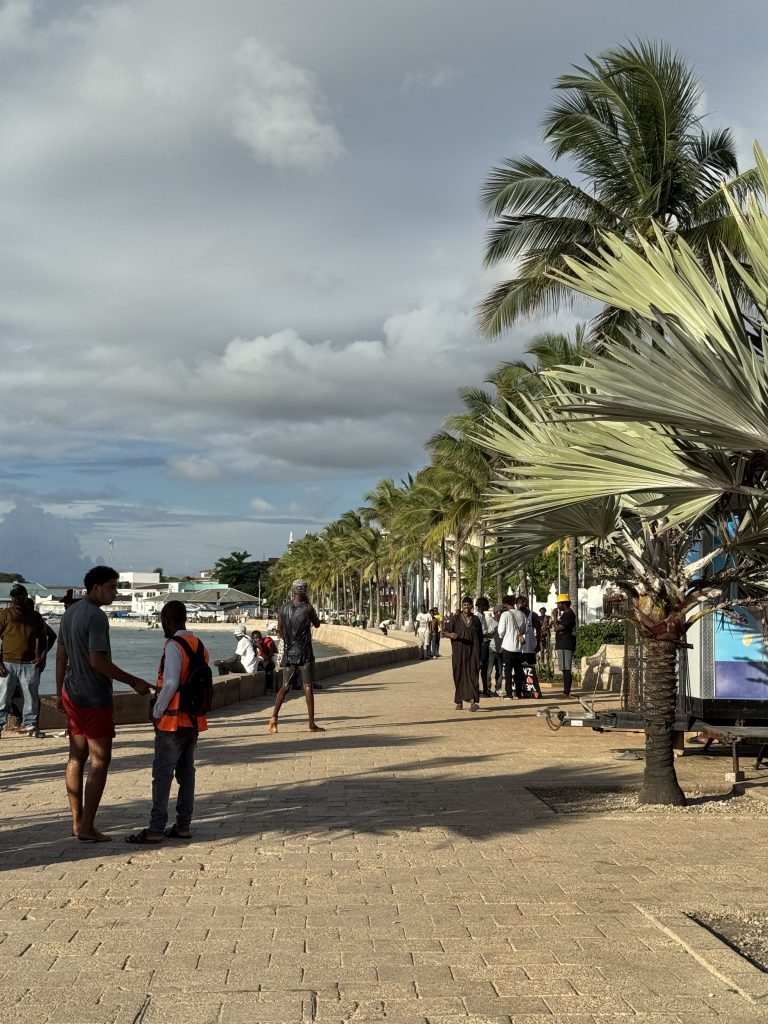
The weather was balmy, there was a sea wind blowing and it was beautiful.
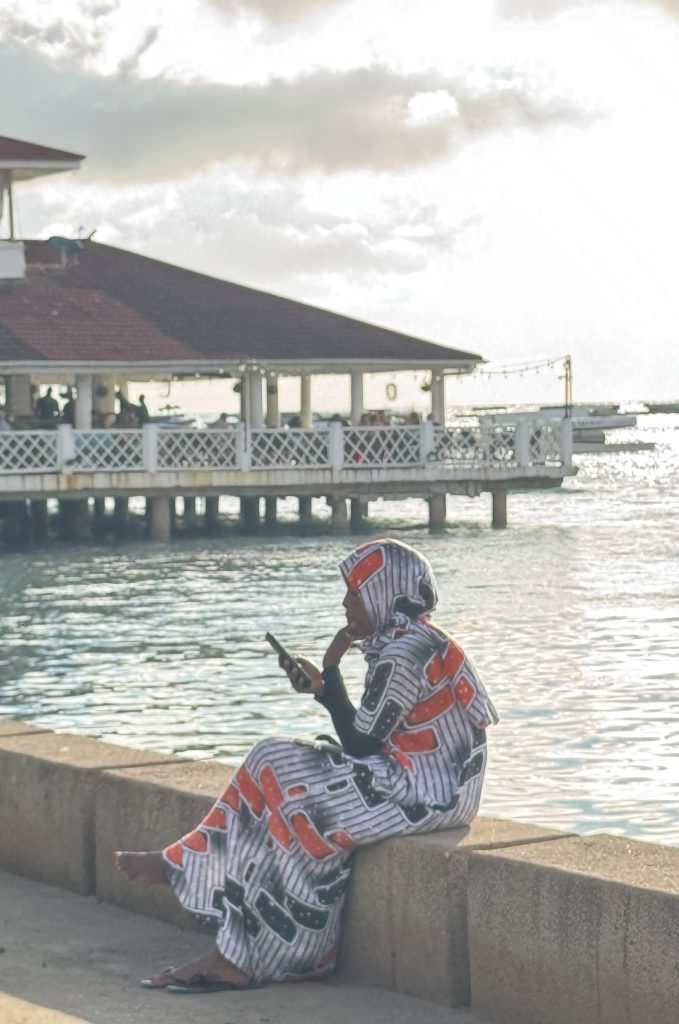
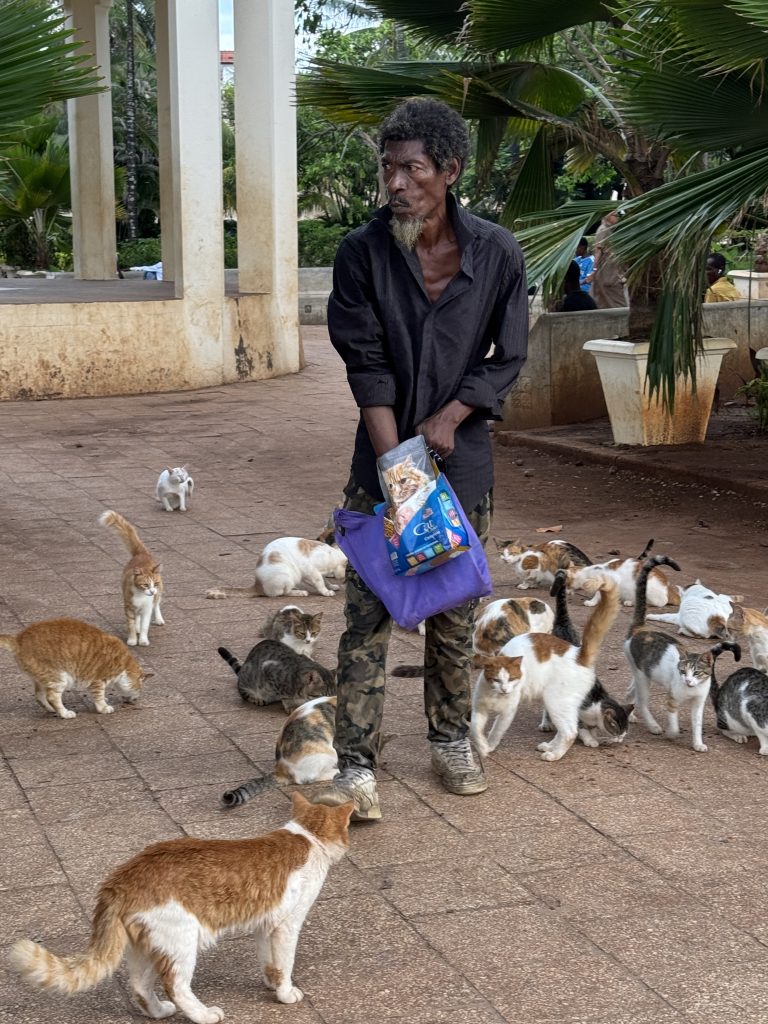
Cats are tolerated here, probably because they’re useful. “They are called Zanzibar lions,” said Awaysu.
This man apparently turns up every evening to feed the harbour cats. He called and they all came running. He had names for each of them.
Dogs are regarded as unclean animals. “Only rich people have a dog, and they keep them inside. If a dog is on the street and it touched someone’s leg or sniffs someone, they stone it to death. It’s unclean. “
I thought of Scout, of course…
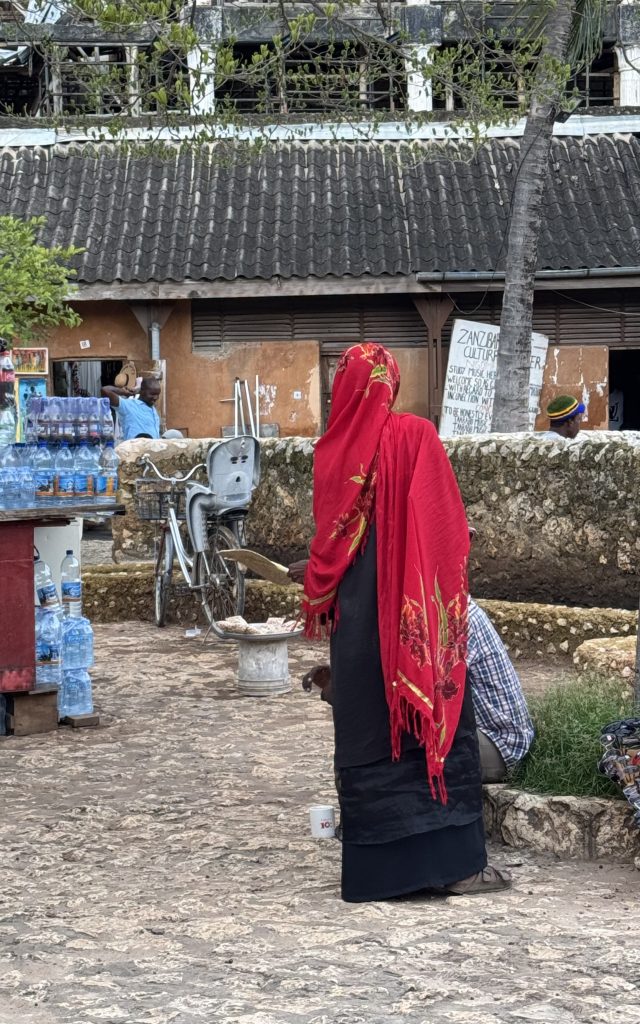
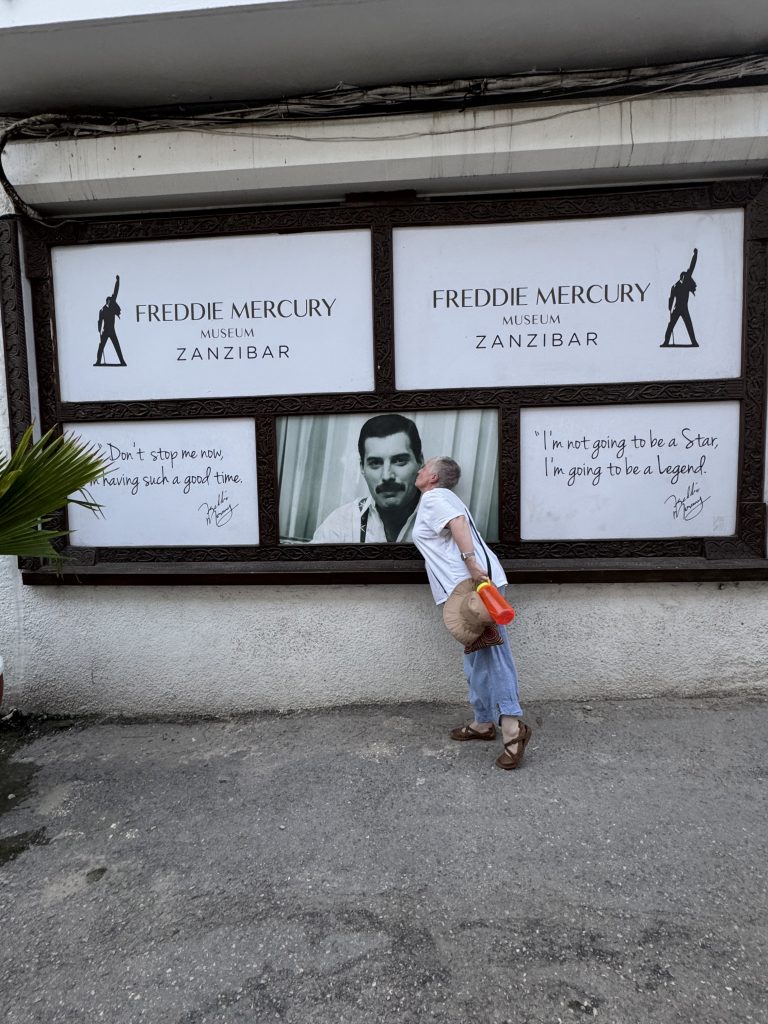
Freddie Mercury was born in Zanzibar in this house. It’s illegal to be gay here, but once the government realised that they could make money from it, they conveniently overlooked this fact and opened the museum. We didn’t go in, but we all had our pictures taken out the front.
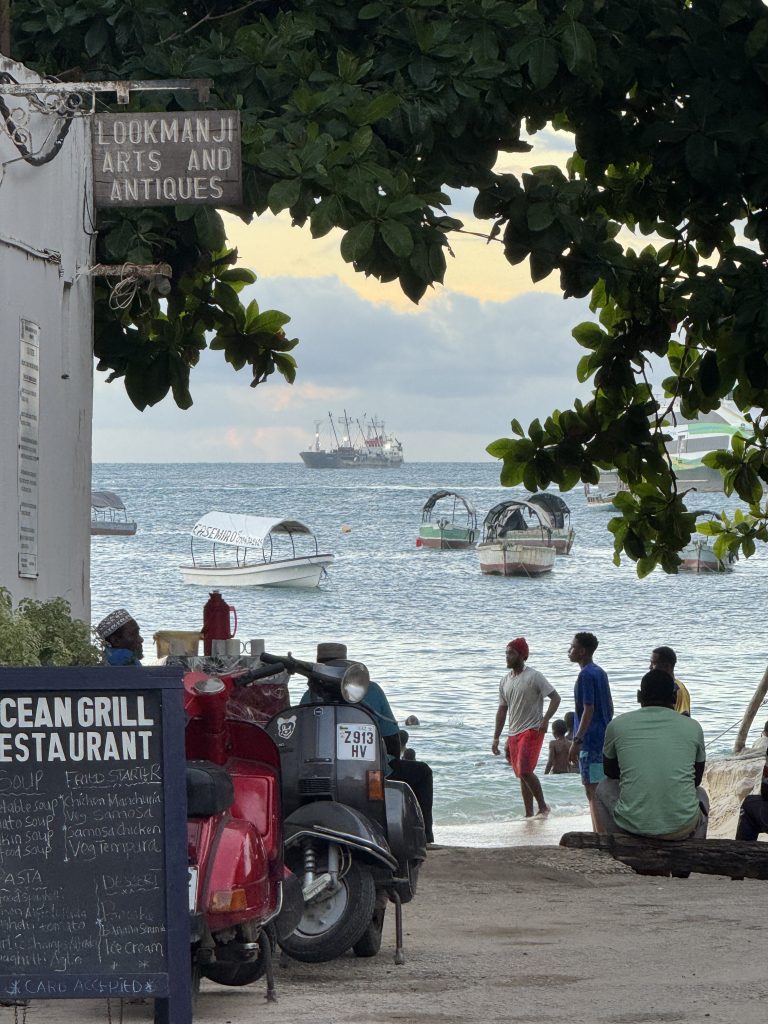
As we were getting back into the van to go back to the resort, I saw the silvery water of the harbour.
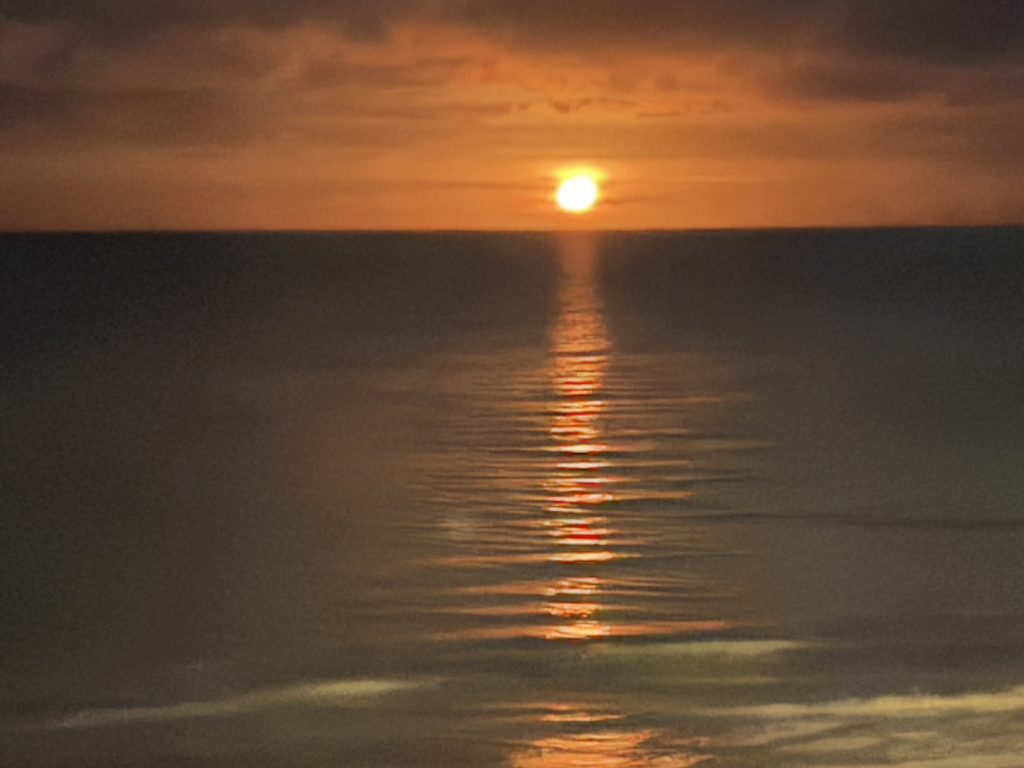
We were having a late dinner at the Asian restaurant on the beach back at the resort when someone noticed the sunset.
All this, and inclusive alcohol too! I haven’t been drinking on this holiday, but if it’s free, then I’ll have a couple of reds with dinner.
Tomorrow we head back into town.
Dad Joke of the day:

Leave a Reply